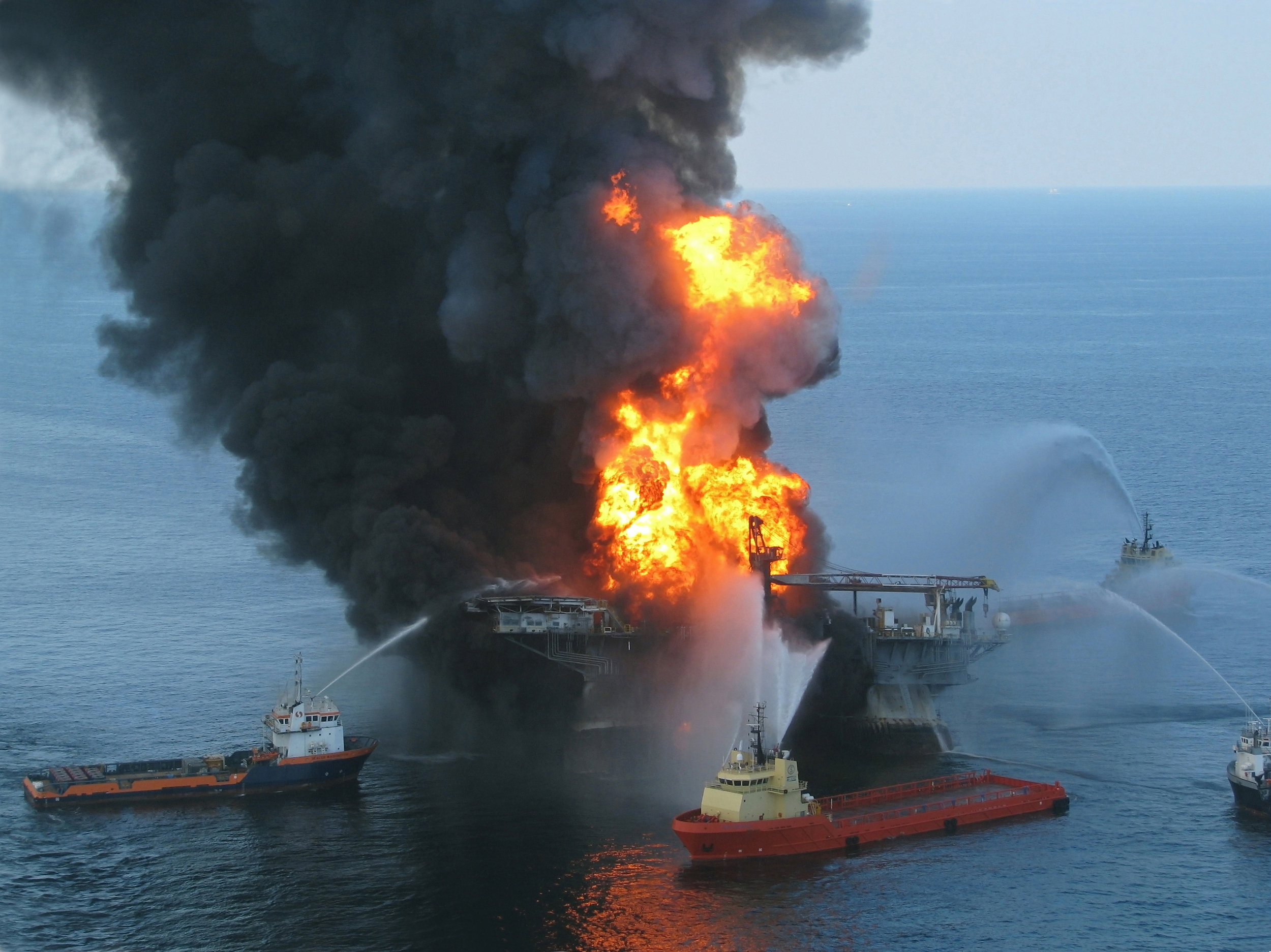Documentary Review: "The Great Invisible" redirects BP oil spill blame
By Scott Brown This is not a film about seabirds covered in slimy, dripping tar, or oil-slick beaches littered with lifeless fish. “The Great Invisible”, filmmaker Margaret Brown’s newest documentary about the 2010 BP oil spill, is an intimate look into people’s lives that argues we all have a hand in the sticky world of oil. Brown came to Northwestern on Thursday night for a screening at the Block Museum.
The film opens with the fiery, red explosion of the Deepwater Horizon oil rig (owned by Transocean and leased by BP) off the Gulf of Mexico on April 20, 2010. Eleven workers died and an oil spill 80 miles long gushed into the ocean, creating one of the largest man-made natural disasters in history, two-thirds of which BP never cleaned up. Scientists are still assessing the long-term impacts on wildlife health and populations.
“This is a 20 to 30 year trajectory of impact,” Brown said in our conversation after the screening. “It trickles up through the ecosystem in ways we don’t understand.”
Brown said she struggled to find a coherent story in such an unpredictable situation, so instead she decided to focus on the more immediate impacts of the spill. It started when her dad sent pictures showing oil leaking into the water around his house, which is located off a Gulf inlet in Brown’s hometown of Mobile, Alabama. She flew back to investigate, and immediately saw the devastation the spill had wreaked.
“When it started, I just felt powerless, and kind of angry,” Brown said. “People committed suicide because of it; captains of boats and things like that. People just felt hopeless.”
Brown gets up close with many residents who depended on the seafood economy for income, which was devastated when the spill contaminated the animals they usually harvested. Disillusioned employees crack crab shells and hammer oysters as they talk about decreased work hours and missing compensation from BP’s $20 billion damages fund. Small-time fishermen display freshly caught shrimp that leak brown oil, describing how they’ve had to start “junking” to pay the bills, cleaning up yards and selling whatever they find. Brown’s most likeable character is Alabama native Roosevelt Harris, a seasoned community volunteer who preaches a simple message of helping those in need as he delivers food to struggling families in a local trailer park.
The film also explores the explosion’s more personal impacts, highlighting Deepwater Horizon chief mechanic Doug Brown and his co-worker Stephen Stone, who both survived the explosion. They reminisce about the thrill and pride of working on the rig, but they also speak of the external pressures put on them by BP and Transocean; the constant drive to save time and make more money led to a disregard for safety that eventually cost people’s lives. For some, life after Deepwater is marred by post-traumatic stress and even suicide attempts. In one of the film’s most sobering scenes, Doug Brown describes his sense of guilt for what happened, backed by shots of him swallowing handfuls of prescribed painkillers.
Yet Brown said she is “not an activist”, and she lets the often-demonized oil industry have its say as well. Boat captains in Louisiana lament the unemployment caused by President Obama’s six-month moratorium on offshore drilling enacted after the spill. A group of oil executives sit around a dinner table in Houston, pointing out the integral role their industry plays in the global economy and the American demand for cheap gasoline. The film turns the usual narrative of evil oil corporations on its head, inserting human faces that allow the viewer to empathize with their position and muddling where the fault really lies.
Brown’s film is emotionally stirring, not only due to the pain of the people impacted by the disaster, but also because of the way it calls out the viewer. True, Transocean owned the rig and BP owned the oil. But Americans continue to be the world’s highest petroleum consumers, with few signs that we will satiate our appetite anytime soon. Brown seems to think that just pinning the blame on big oil is missing the bigger picture.
“I wanted it to feel like you’re kind of seeing all the different sides of it and thinking about ‘well, these people aren’t as bad as I think, and these people aren’t as good as I think’,” she said. “We’re all really deeply implicated. We all use the stuff. We all need to use less.”
To learn more, take action or find out where you can watch “The Great Invisible”, visit the film’s website. The Block Museum will be showing free documentaries every Thursday until mid-February as part of their "Lay of the Land" series.
[fbshare type="button"] [twitter style="horizontal" float="left"]

